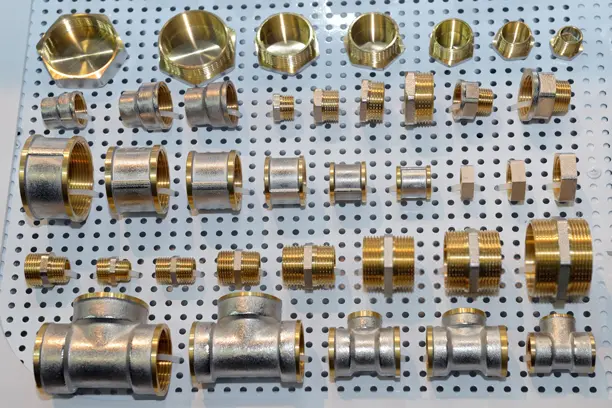Connecting Brass to Stainless Steel: A Comprehensive Guide
Introduction
Brass and stainless steel are versatile materials in various industries, often used in plumbing and construction. This article explores the compatibility of connect brass to stainless steel, highlighting the characteristics, functions, and advantages of these materials.
Understanding Brass and Stainless Steel
Brass, a metal alloy of copper and zinc, is known for its corrosion resistance, durability, and aesthetic appeal. It’s commonly used in plumbing fittings, valves, and decorative applications. On the other hand, stainless steel, an alloy of iron, chromium, and other elements, boasts excellent corrosion resistance, strength, and hygiene properties. It finds applications in diverse fields, including kitchen appliances, construction, and industrial equipment.
Characteristics of Brass and Stainless Steel
Brass:
Corrosion Resistance: Resistant to rust and corrosion, making it suitable for various environments.
Aesthetic Appeal: Offers an attractive golden appearance, ideal for decorative applications.
Ductility: Easily shaped and formed, allowing for intricate designs in fittings and fixtures.
Stainless Steel:
Exceptional Corrosion Resistance: Highly resistant to rust, corrosion, and staining, ensuring longevity.
Strength: Provides structural strength and durability, making it suitable for heavy-duty applications.
Hygienic Properties: Suitable for applications with strict hygiene requirements, such as food and medical industries.
Connecting Brass to Stainless Steel
When connecting brass to stainless steel, it’s crucial to consider the potential for galvanic corrosion due to the metals’ different electrode potentials.
To prevent corrosion, follow these guidelines:
Use Dielectric Unions: Install dielectric unions, which feature insulating materials to separate the metals and prevent direct contact.
Apply Anti-Seize Compounds: Coat the connection threads with anti-seize compounds to reduce friction and protect against corrosion.
Consider Electrode Potential: Choose metals with similar electrode potentials to minimize the risk of galvanic corrosion.
Advantages of Connecting Brass to Stainless Steel
Enhanced Durability: The combination of brass and stainless steel creates a durable and long-lasting connection suitable for various applications.
Corrosion Resistance: Properly connecting brass to stainless steel mitigates the risk of corrosion, ensuring a reliable and low-maintenance solution.
Aesthetic Versatility: The pairing allows for a mix of aesthetic appeal, with brass providing a golden touch and stainless steel contributing a modern and sleek appearance.
Conclusion
Connecting brass to stainless steel can be a successful and durable solution when done correctly. Understanding the characteristics, employing preventive measures, and considering the advantages ensure a reliable and aesthetically pleasing connection. Whether in plumbing, construction, or other applications, this combination offers a blend of functionality and visual appeal.
Contact
We will reply your email or fax within 24 hours.
You can call us at any time if there is any question on our production.
For more information,pls visit our webside https://www.ifanplus.com/
Pls Mailto: [email protected]






